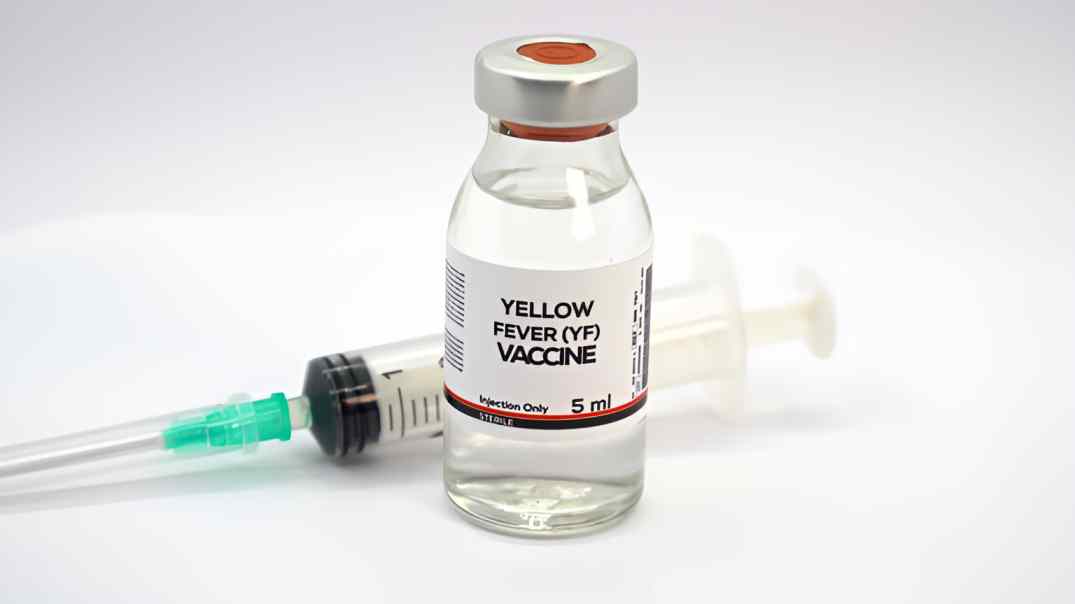Yellow fever outbreak hits Uganda

Uganda is tackling the yellow fever threat with nearly 4 million people vaccinated.
Uganda is tackling the yellow fever threat with an ambitious vaccination drive that has already reached nearly 4 million people across the eastern region.
The campaign, launched in April, was spurred by the confirmation of six yellow fever cases in the region and aims to stop the disease before it spreads further.
In Malaba, a border town where the campaign kicked off, children at Al-Khamis Islamic Day primary school eagerly received their vaccines.
Headteacher Yusuf Matovu remarked that despite the lack of proper school fences, the children were calm and cooperative.
"They might not all fully understand why, but they know this is important because they received vaccination counselling. None of the parents or guardians raised any concerns," he said.
The campaign targeted 4.3 million people aged 9 months to 60 years across 19 districts, with an impressive 92% of eligible individuals receiving the vaccine.
Health workers, including nurse Angela Betty from Malaba Health Centre IV, reported widespread curiosity and support as highlighted by Gavi, the vaccine alliance.
"For not since the COVID-19 days have syringes and vaccines moved within the community in this way," she said, highlighting how rare such injections are in rural communities, where polio vaccines are more common.
Yellow fever, transmitted by mosquitoes, is a deadly viral disease with symptoms including high fever, yellow skin, and bleeding.
The disease can kill 30-60% of those who develop severe symptoms, which has made this campaign critical.
In the face of these risks, local communities have been cooperative, particularly in the wake of past outbreaks and the ongoing threat of new ones.
Truck driver Jeffrey Lubega, who frequently crosses the border between Uganda and Kenya, says such outbreaks also harm business.
"Since COVID-19, it has been one outbreak after another. Sometimes we cannot cross the border until screening has been completed, and it can take many days, which is money down the drain. I was quarantined during COVID-19, at my own cost. I received the yellow fever vaccine as I waited for my truck to clear," he shared.
Nurse Alowo Sophie, overseeing the vaccination effort, emphasized the need for quick action to control the outbreak. She explained that vaccination sites were set up across schools, churches, and health facilities to reach as many people as possible.
"This campaign is part of our effort to stop the outbreak before it spreads further," she said.
The drive also coincided with Uganda’s malaria vaccine launch, which presented logistical challenges.
However, the response from the community has been strong, with locals understanding the importance of vaccinations.
"People are welcoming vaccination in the community to save themselves. There is fear of these outbreaks and a better understanding of vaccines since the pandemic," said Melissa Nafuna, a nursery school teacher in Tororo.
Although the yellow fever vaccine is recommended for all, pregnant and breastfeeding women, those with sickle cell disease, and those allergic to eggs were excluded from the campaign.
Health experts say these groups may face risks due to the vaccine’s composition, which includes traces of chicken egg proteins.
Uganda has faced repeated yellow fever outbreaks over the years, with 5,437 suspected cases reported between 2012 and 2022.
Alowo warned that symptoms of yellow fever can often be mistaken for those of malaria, another mosquito-borne disease.
"We are especially concerned because people could confuse yellow fever symptoms with those of malaria, and we could lose people before the right diagnosis is made," she said.
The yellow fever vaccine, added to Uganda’s routine immunization schedule in 2022, has been proven to provide lifelong protection after a single dose.
However, national coverage remains low, and campaigns like this one are essential to boost vaccination rates and reduce the risk of future outbreaks.
Uganda shares borders with countries where yellow fever vaccination coverage is lower, including Kenya, where the risk remains high due to limited immunization efforts.
In Malaba, a critical border point between Uganda and Kenya, officials estimate that around 22,970 people cross the border daily, with many using unofficial routes.
